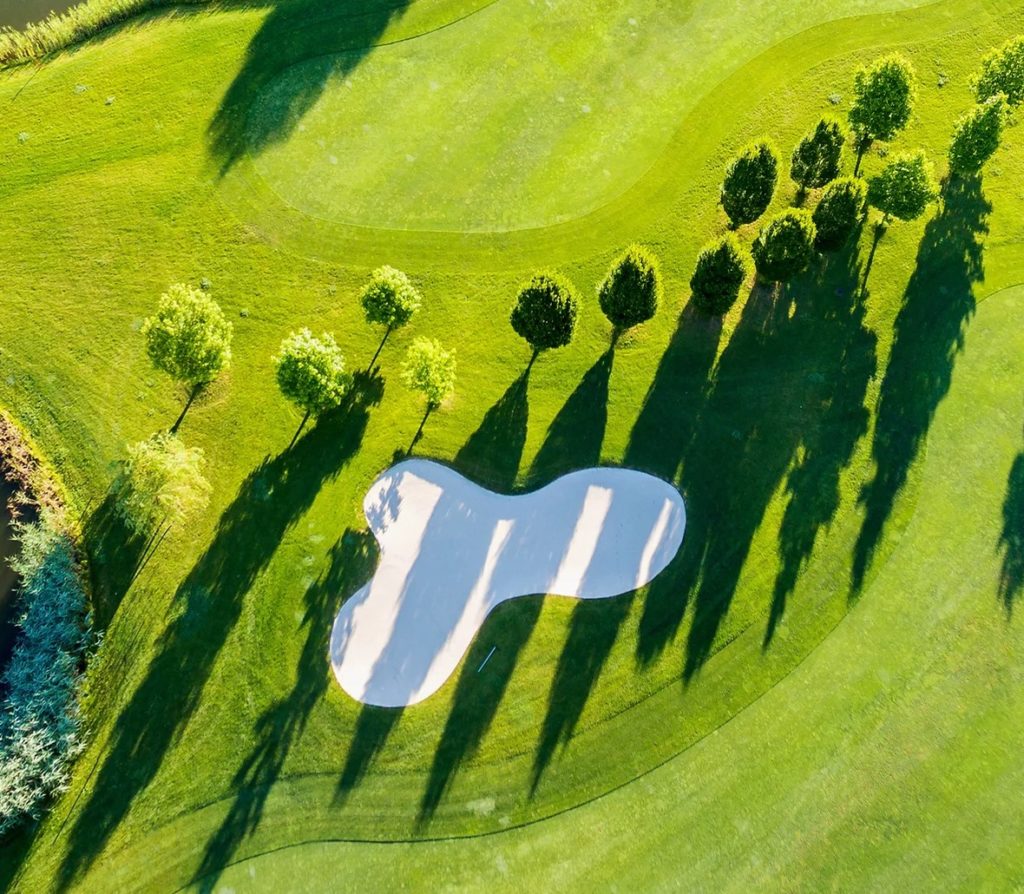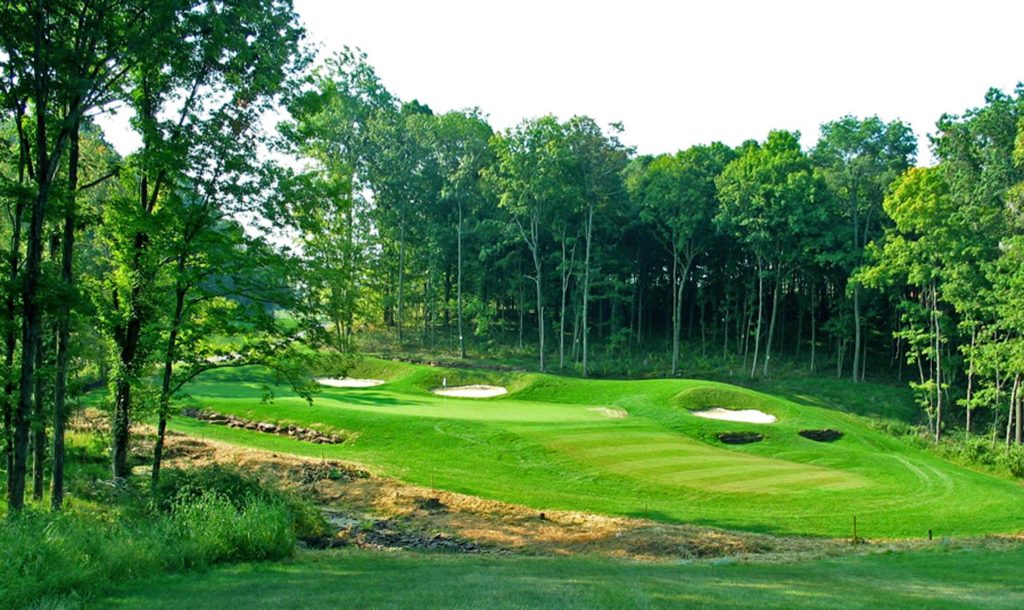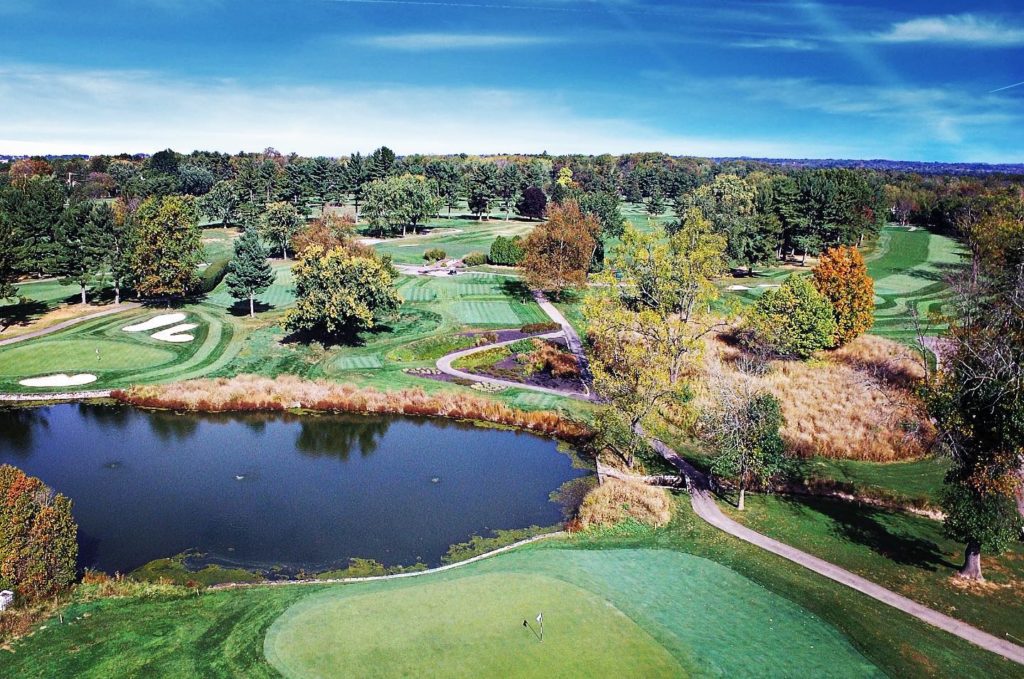
If you’re like me when you’re asked about Valley Forge, Pennsylvania, the first thing that comes to mind is the site of the encampment for the Continental Army in the winter of 1777 and the spring of 1778 during the Revolutionary War with Great Britain.
But would you be surprised to hear that Montgomery County, which is the home of Valley Forge and almost 900,000 citizens in the rolling hills northwest of Philadelphia, is a hotbed for really great golf, with 53 courses ready for a tee time at the asking?
It was in Valley Forge that George Washington’s collection of colonial militias melded through the winter cold and emerged as a cohesive and disciplined fighting force. The experiences there and in the surrounding countryside helped Washington’s army prepare and become capable of defeating the British and winning American independence during the remaining five years of the war.
Montgomery County is geographically diverse, ranging from farms and open land in the extreme north of the county to densely populated suburban neighborhoods in the southern and central portions of the county. The county marks a portion of the Delaware Valley’s northern border with the Lehigh Valley region of Pennsylvania.
The Valley Forge National Historical Park, about a half-hour’s drive from Philadelphia, is one of the county’s most visited tourist attractions – and rightfully so. But there are also many other family attractions, shopping, a scintillating arts scene, and scores of outdoor activities that are headlined, at least for our purposes, by golf.

Bluestone CC (above, as well)
Jeffersonville Golf Club is the bell cow of public golf in the region
If there’s a must-play public access course on your trip to Montgomery County it’s Jeffersonville Golf Club, located about two miles northeast of the national park and approximately 20 miles northwest of Philadelphia.
The course was designed by the legendary Donald Ross, opened in 1931 and is owned and operated by the West Norriton Township, making it one of the few Ross-fashioned municipal courses in America.
The municipality purchased Jeffersonville GC in 1972 and paid Ron Pritchard, a locally based architect who specializes in restoring Ross courses, more than $2 million to bring it back to life.
Few golfers have regular access to a Ross course as members of a private club, and even fewer still are fortunate enough to live near a course designed by him that is open to the public and relatively inexpensive to play. This aspect – and a routing that has stood the test of time – make Jeffersonville GC a staple of golfers visiting Montgomery County.
The course has a great variety of holes – long and short, doglegs in both directions and demanding putting surfaces – to keep the golfer’s interest for the entire routing. Fairways are relatively wide, hazards are few (but can take their pound of flesh when mistakes are made), and greens are approachable and reward good decision-making.
Many people believe the best hole at Jeffersonville GC is the 13th, a 430-yard par-4 that doglegs slightly to the left while playing down to a creek, then asks for a mid-iron approach to an elevated, swayback green flanked by bunkers and swathed in towering trees (what a description, right?).
That challenge sets the stage for the course’s best stretch of holes, beginning with the 15th, a 215-yard, uphill par-3 that ranks among the most difficult one-shotters in the region. Next up is a 390-yard par-4 with a slight dogleg-right and a putting surface that is unforgettable.
The 452-yard 17th is a dogleg right with a cut-the-corner tee shot, followed by a finishing hole that is a 545-yard double-dogleg par-5, complicated by a lake and the toughest green on the course.
Prior to becoming a golf course, the vast property for Jeffersonville GC was used for steeplechase horse racing in the late 1800s and early 1900s. Those races were conducted on a half-mile, oval track that was located where the 11th and 16th holes currently are routed – thus is the origin of the No. 27 in the course’s logo.
After being restored and revamped in 2000, the course hosted a U.S. Amateur sectional qualifier as well as numerous Philadelphia Public Links Championships. Jeffersonville GC is currently ranked among the top 10 public golf courses in Pennsylvania.

Jefferson Golf Club
Raven’s Claw GC might be best of the rest
Raven’s Claw Golf Club is set in Pottstown in one of the area’s top golf/residential neighborhoods. This Ed Shearon-design debuted in 2005 and is routed through woodlands and tumbling hills, playing as a par-71 and at 6,739 yards from the back tees.
There are some links-style challenges, but it’s primarily a really good parkland design with severe doglegs, marshes, ravines, and creek beds, plenty of forced carries and putting surfaces that are mostly accessible.
Raven’s Claw’s challenge is not subtle, and the course is full of character while making the most out of the site’s elevation changes. There are lots of different looks and angles to attack the holes, all adding to the course’s fun factor.
Success at Raven’s Claw will be better attained with prowess off the tee, with that aspect of the game a bit more important here than most other courses in the region.
The toughest hole on the course is likely the par-3 17th. At 242 yards from the elevated back tee, it’s one of the longest one-shotters in the state. You must avoid the out of bounds down the entire right side. The putting surface is long and undulating with a U-shaped bunker covering the front-right. A par here will be akin to a birdie anywhere else on the course. It’s called “Calamity” for good reason.
Raven’s Claw rewards the shot-maker, but that doesn’t mean the mid-to-high handicapper can’t enjoy this gem. All levels of golfers will need a strong disposition to attack Shearon’s design, which features a terrific, bold set of par-3s and the overall experience of a private club.

Raven’s Claw
Plan ahead for a chance to play Bluestone CC
If you plan your trip ahead of time and book your round through the county’s tourism bureau (valleyforge.org), you can likely wrangle a round at Bluestone Country Club in Blue Bell, one of the region’s most prestigious tracks. The course will host the Advocates Professional Golf Association Tour’s Valley Forge tournament this September for the second consecutive year.
The APGA is a non-profit organization with the mission to prepare African Americans and other minority golfers to compete and win at the highest level of professional golf, both on tour and in the golf industry.
Bluestone CC’s championship course was originally known as Meadowlands Country Club and was designed by renowned father and son team, Bill and David Gordon. Tom Clark, of the prodigious design firm of Ault, Clark, and Associates, renovated the course and rerouted most of the holes in 1995.
The most impressive feature at Bluestone CC are the putting surfaces, which contain plenty of movement and provide a “game within a game” mantra of for putting. The Gordons are known for their greens and this course is representative of that.
Figuring out the areas of the putting surfaces to attack is necessary on approach shots. That test, combined with navigating the tree-lined routing, make for an engaging and enjoyable round at Bluestone CC.
There are plenty of other great courses in the area, including Green Valley Country Club in Lafayette Hill, Macoby Run Golf Course in Green Lane, Lederach Golf Club in Harleysville, and Skippack Golf Club at the Evansburg State Park – to name just a few.

Bluestone CC

